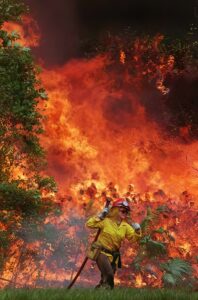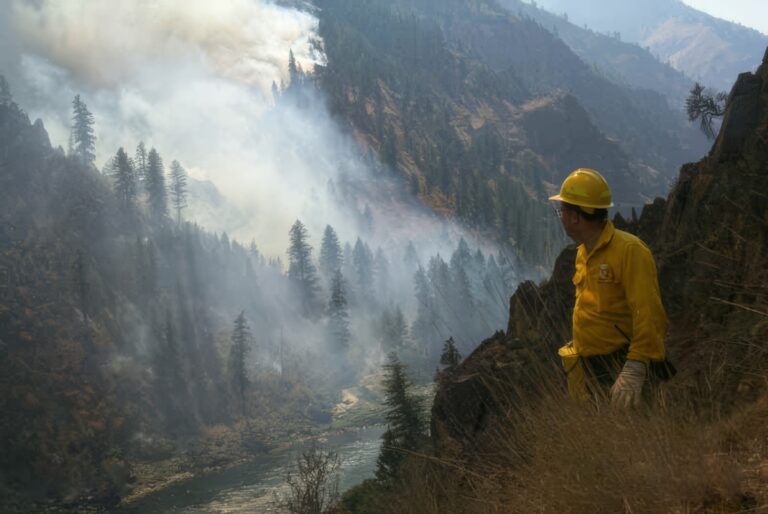The Cooperative Institute for Severe and High-Impact Weather Research and Operations (CIWRO) at the University of Oklahoma has received US$1.4m to conduct research into mitigating the impacts of wildfires across the country.
The grant, awarded by the US Department of Commerce and the National Oceanic and Atmospheric Administration (NOAA), is part of a US$34m national initiative to improve the understanding and modeling of wildfire behavior and integrate that into weather forecasting and wildfire warnings.
The funding will be provided over five years to six research universities in NOAA’s Cooperative Institute system to support wildfire preparedness and response as part of President Biden’s Investing in America agenda under the Bipartisan Infrastructure Law. CIWRO will conduct two major studies as part of the grant – probabilistic fire weather guidance and fire weather observation analysis.
Using 15 years of wildfire data, the probabilistic fire weather guidance project will identify a statistical relationship between the critical level of fire weather outlooks that are issued by the National Weather Service Storm Prediction Center (SPC) and fire spread rate as well as the cost of fire suppression.
“The resultant technology of this project will provide real-time guidance on anticipated cost and magnitude of fire suppression resources for a wildfire scenario as statistically related to the probabilistic critical level forecast of SPC fire weather outlooks,” said David Jahn, research scientist at CIWRO and principal investigator on the project. “Such technology will be of real value to fire and emergency managers to anticipate the amount and cost of resources to address a specific wildfire event.”

The Fire Weather Observation Analysis project aims to increase understanding and improve predictions of the structure, behavior and downstream impacts of both plume- and wind-driven wildfires in the USA, better characterize land surface conditions post-wildfire and enhance understanding of hydrological response to flash floods/debris flows post-wildfire.
Using deployable radar and uncrewed aerial systems, scientists will collect unique observations of active wildfires and post-wildfire environments. This data will be used for detailed case analyses of wildfire and post-wildfire-related events as well as for the validation and development of the warn-on-forecast system for smoke to improve short-term forecasts of up to three hours in high-impact fire weather events. Improved fire weather impact observations and forecasts are expected to aid decision making in determining where life and property impacts will be greatest and enable better mitigation efforts.
CIWRO also received a US$62,000 grant from the Disaster Relief Supplemental Act to assist in NOAA’s Fire Weather Testbed, enabling scientists and forecasters to evaluate experimental products and speed their transition to operations.
Greg McFarquhar, director of CIWRO, said, “Although work ongoing at CIWRO will certainly not eliminate the occurrence of fire disasters, the improved impact-based products developed from our research will ultimately allow for better probabilistic forecasts of the spread of fire that will help communities deploy fire suppression assets so that the economic damage, loss of life and destruction of fires can be somewhat mitigated.”
Knowledge and tools generated from this funding are intended to help NOAA build and deploy new observing systems that detect and monitor wildfires and their impacts, as well as advance high-resolution models to predict fires, emissions and air quality.
“Americans are increasingly at risk from the threat of wildfires,” said Secretary of Commerce Gina Raimondo. “NOAA’s observations, models, outlooks and forecasts are essential for supporting wildfire response across America. As part of President Biden’s Investing in America agenda, this funding will help increase lead times for fire weather warnings, speed detection of fire starts and provide more real-time actionable information to prevent wildfires, support firefighting crews and keep communities safe.”



